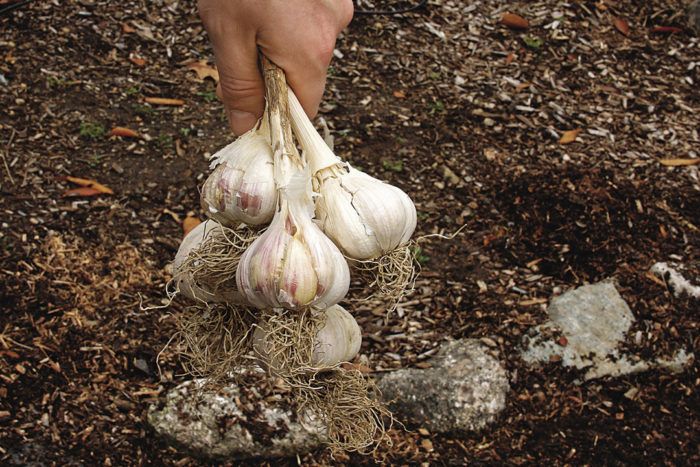
Ask a gardener what signals the arrival of spring and you’ll likely hear one of these common answers: “the daffodils showing up,” “the robins returning,” and “the sun intensifying.” My response? “Garlic.” Nothing makes me happier than looking out onto my barren vegetable garden and seeing those small green sprouts poking through the dirt. Garlic shows up to the vernal celebration before nearly anything else, even snowdrops. Despite this, I’ve had to explain more than a few times my reasoning behind growing garlic. After all, it takes patience to grow this crop because you have to wait seven months (or more) after planting to harvest.
But garlic is worth the wait—and not just because it provides a cure for the winter blues. It’s easy to grow, and it doesn’t have many pest or disease issues (even deer avoid it). And for each small clove you put in the ground, you get an entire bulb as a return on your investment. With grocery stores sometimes charging up to $1 apiece for garlic bulbs, it is truly a crop that is less expensive to grow than to buy. In spite of all these amazing attributes, people still have trouble with this crop. The following are some common questions and straightforward answers to planting, caring for, and harvesting garlic.
1. Is it better to plant a hardneck or a softneck type?
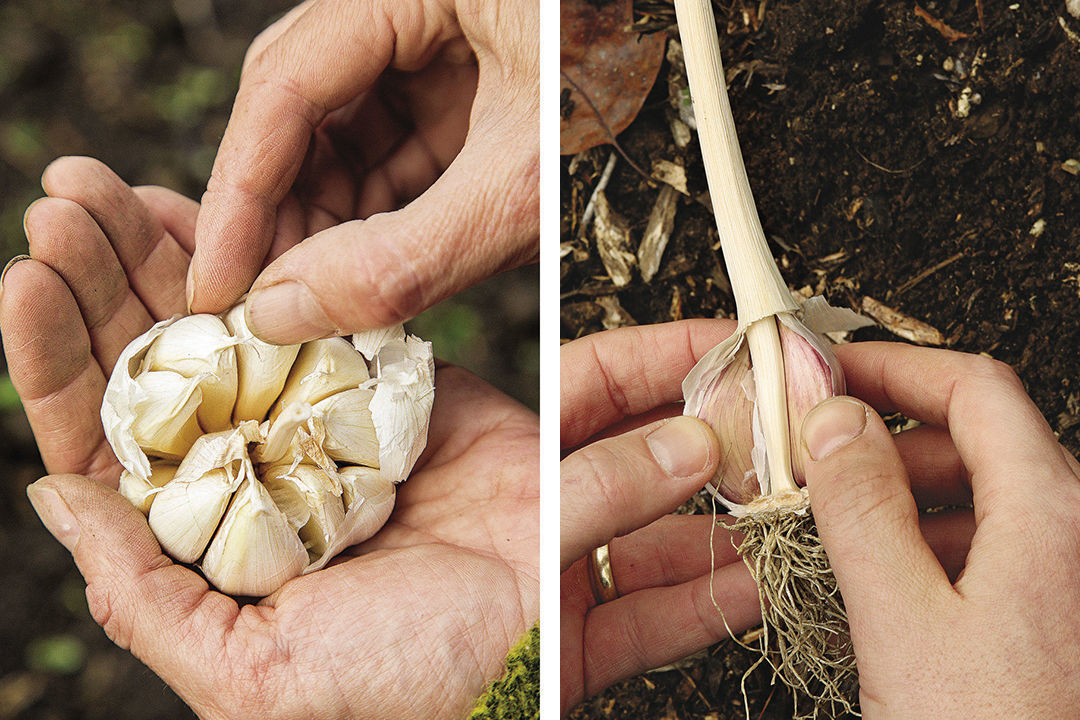
The choice of whether to plant a hardneck or a softneck garlic depends on where you live. If you’re in an area where the winters are mild and that seldom gets stretches of Arctic temperatures, softneck varieties are your best bet. This type has a mild flavor and can be stored for a long period of time; it is what is normally sold in grocery stores. Hardneck varieties are for locations that have harsh winters that seem to last forever. This type is hardy and won’t heave itself out of the ground when the soil freezes. Hardnecks got their name from the rigid stem that runs down the middle of the bulb—an appendage that is missing in softnecks. Hardnecks are generally planted in late fall before the ground freezes, while softnecks can be planted into early winter as long as the ground remains workable.
2. What is seed garlic, and why is it so expensive?

Much like a potato, seed garlic is simply a large bulb of garlic that is generally reserved for replanting due to its robust size. Although this bulb might seem pricey, you end up breaking it apart into individual cloves for planting. This means that each bulb purchased as seed can end up yielding eight or nine bulbs in your garden, making it fairly inexpensive in the long run. And you can reserve your largest bulbs each year and replant them for subsequent harvests, so you might never have to buy garlic again after your initial investment.
3. I don’t have a lot of space, so can I still grow garlic?
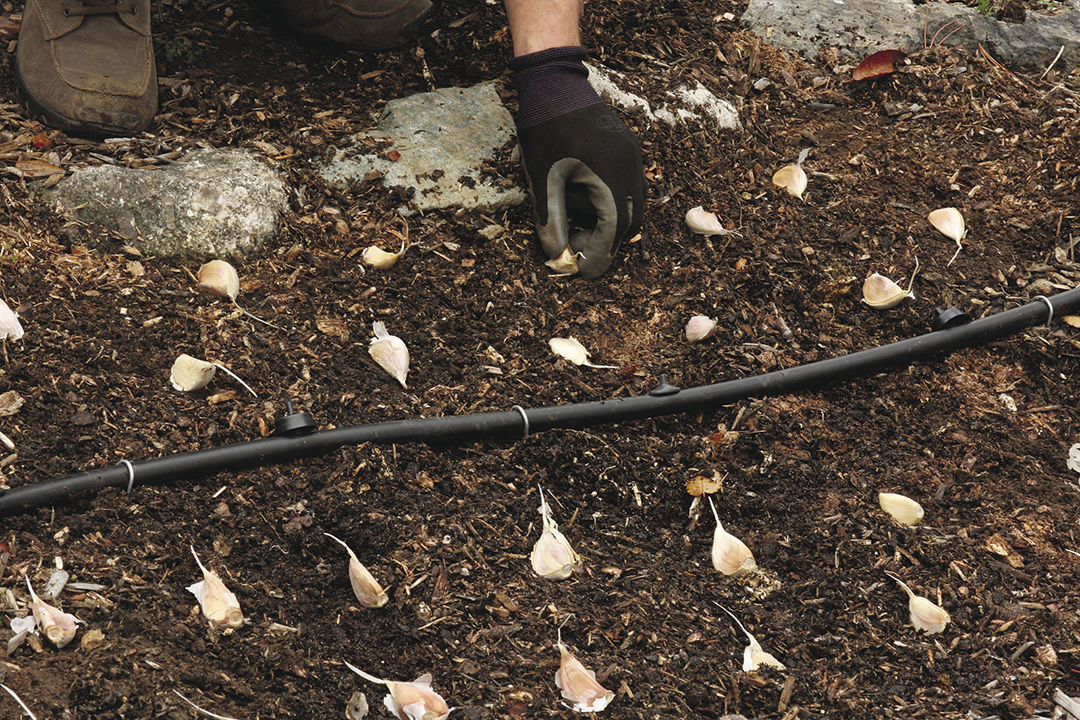
Relatively speaking, garlic can be spaced closer together than many other vegetables; 4 to 6 inches apart is ideal. Although you can plant each clove even closer together, each mature bulb might end up being smaller. I like to pack in as much garlic as possible, so I visualize how big a mature bulb of garlic will be and make sure that I leave a bare minimum of that amount of space between the cloves.
4. Do I need to mulch?
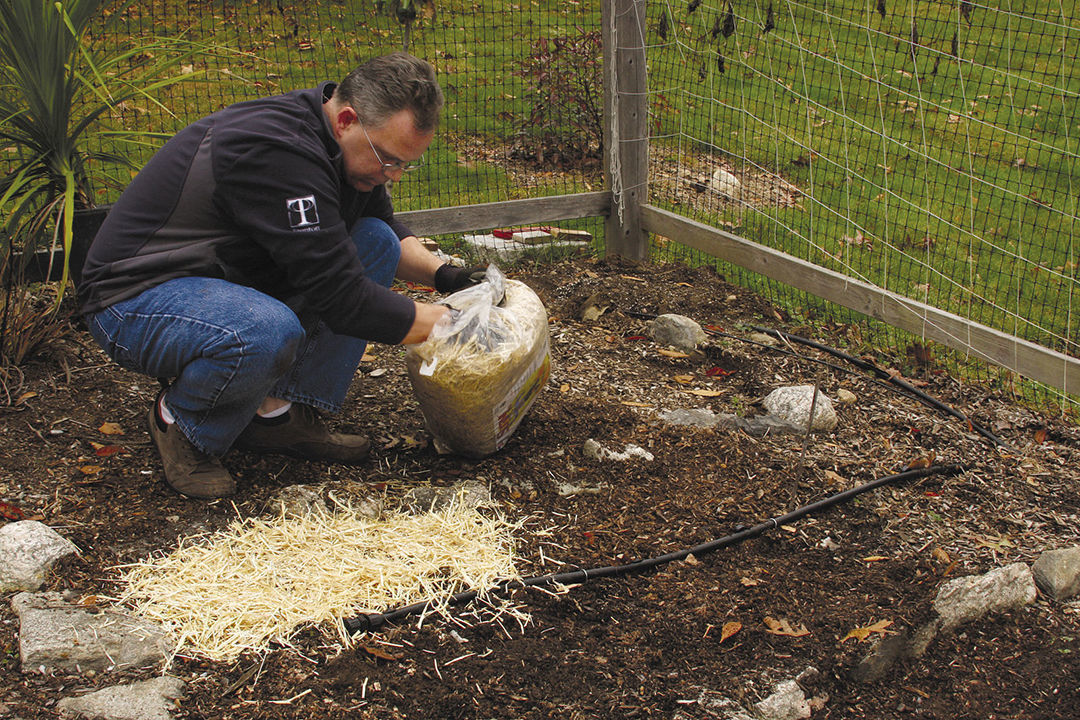
Simply put: Yes, you need to mulch. No matter where you are planting (whether in a mild or a harsh climate), putting down a blanket of winter insulation is a good idea. Straw mulch tends to be the best because it helps regulate the soil temperature throughout winter (preventing early sprouting or frost heave) but isn’t heavy enough to inhibit sprouting in spring. Mulch also helps keep weeds in check and soil moisture consistent.
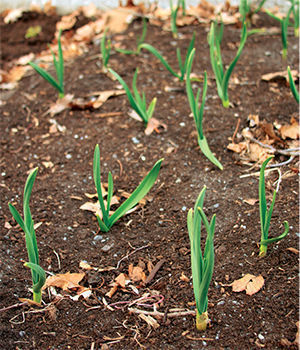
5. It’s the middle of winter and my garlic is sprouting—what should I do?
Despite your best mulching efforts (or if you forget to mulch), when the weather warms up in midwinter, you might see premature green shoots. If this happens, don’t panic. Simply spread another layer of straw over the top of the shoots, and they should pull through without any damage being done to the bulbs forming belowground.
6. Should I snap off the scapes only if I intend to eat them?
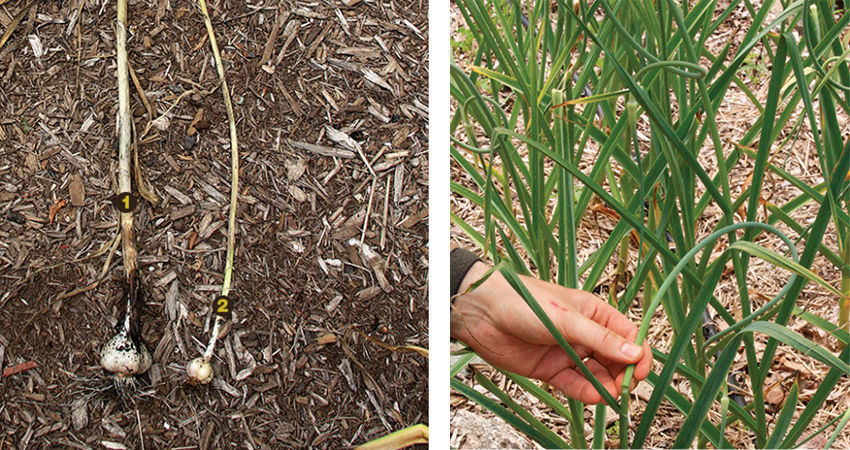
You should snap off the scapes no matter what. Many gardeners in midspring harvest the long curlicue stem that develops on plants (only in hardneck types) because they like to use it in cooking. But there is a biological benefit, as well. By removing the scape, the plant will not be forced to redirect energy into the stem and will, instead, use that energy to form bigger and more robust bulbs.
7. Is it really necessary to cure my garlic?
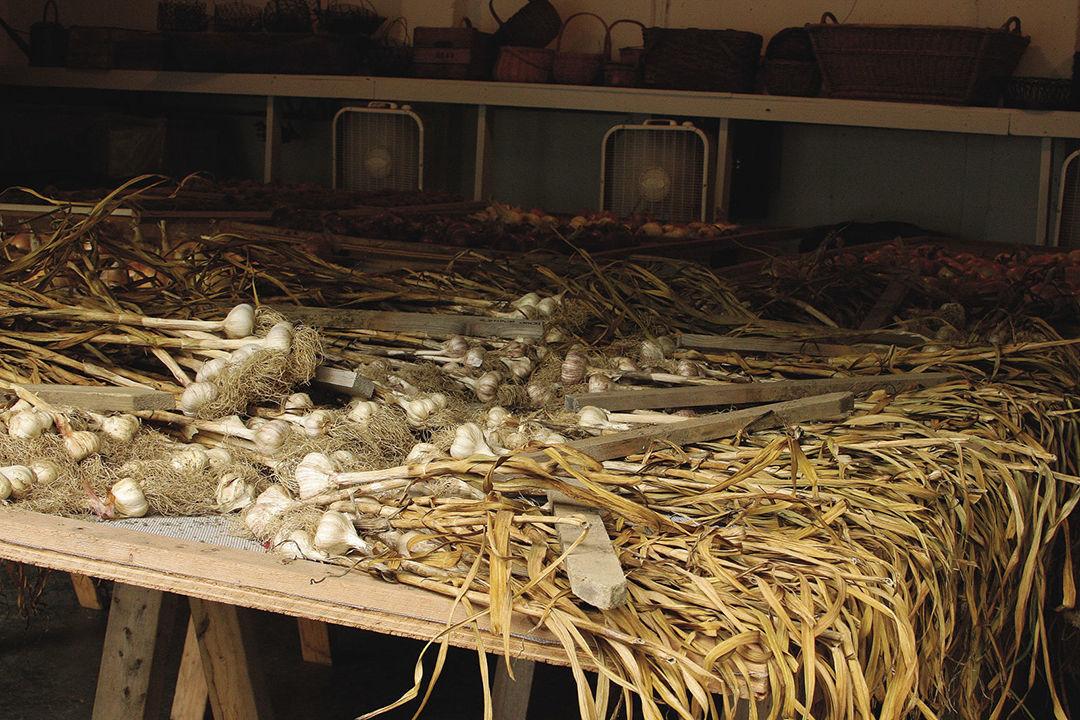
Yes, you need to cure your garlic; otherwise, it will rot before you have a chance to enjoy the fruits of your labor. Curing dries out the bulbs so that they store well. After about 40 percent of the foliage has yellowed, pull the bulbs—plant and all—out of the ground, and lay or hang the garlic in a cool, dry spot for a couple of weeks. Do not wash them off. When the outside of the bulbs are dry and papery, you can brush off any remaining dirt and cut off the top, leaving behind a half inch of stem. If cured correctly, hardnecks will generally keep in storage for four to six months; softnecks can be stored for six to 12 months.
Be sure to remove the germ
Once you’ve harvested your garlic and it has properly cured, you can use it for months. Before tossing the cloves into your savory dishes, however, you might want to do a little trimming. The greenish sprout in the center of a garlic clove is called the “germ.” When garlic is young, the germ is pale, small, and tender. As the garlic ages, the germ turns green, grows larger, and develops an unpleasantly bitter quality, so you’ll want to remove it. If you are using garlic in a soup or a stew or if you are roasting it, you can leave the germ intact. Cooking garlic for a long time tames its bitterness. Here’s how to remove the germ:
1. Cut the clove in half
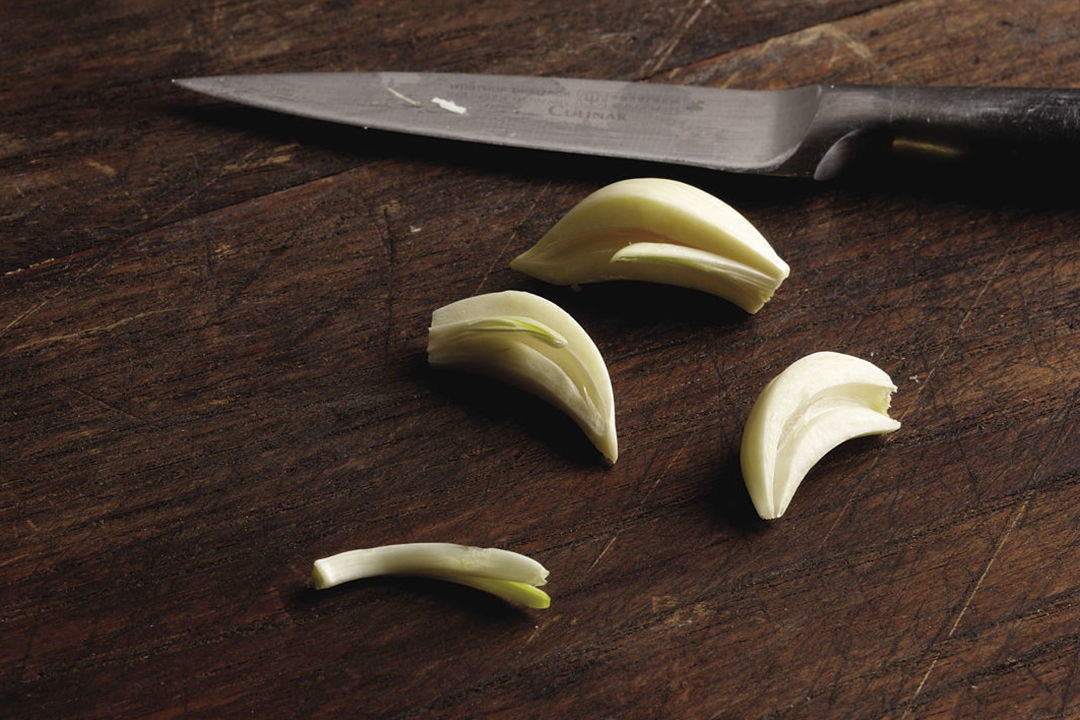
2. Use a paring knife (or your fingernail) to pry the germ out
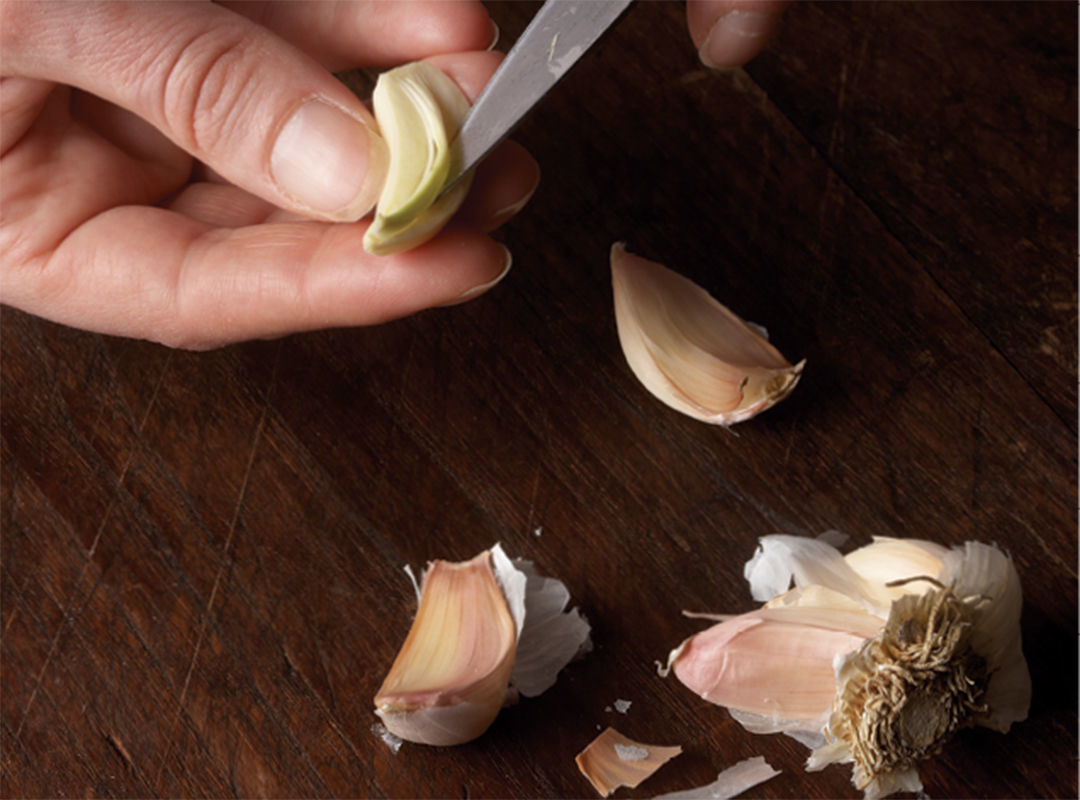
Danielle Sherry is a senior editor who doesn’t grow nearly enough garlic each year in her garden in East Haddam, Connecticut.
Photos, except where noted: Danielle Sherry
The following mail-order plant sellers provide the largest selection of seed garlic:
- Gourmet Garlic Gardens, Bangs, Tex.; 325-348-3049; gourmetgarlicgardens.com
- Southern Exposure Seed Exchange, Mineral, Va.; 540-894-9480; southernexposure.com
- Territorial Seed Company, Cottage Grove, Ore.; 800-626-0866; territorialseed.com



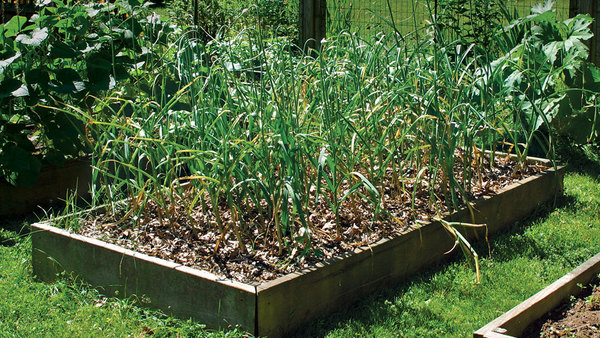

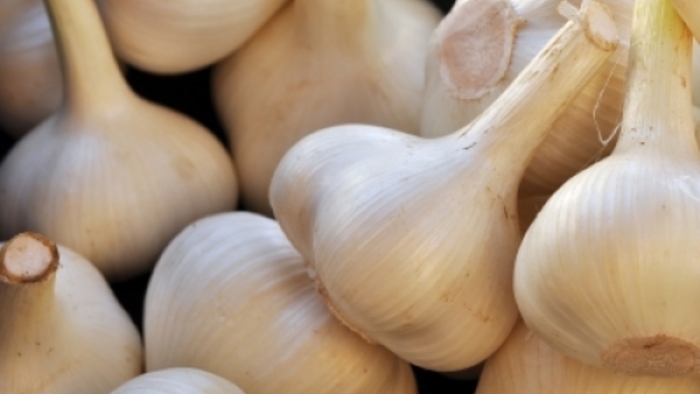













Comments
Log in or create an account to post a comment.
Sign up Log in